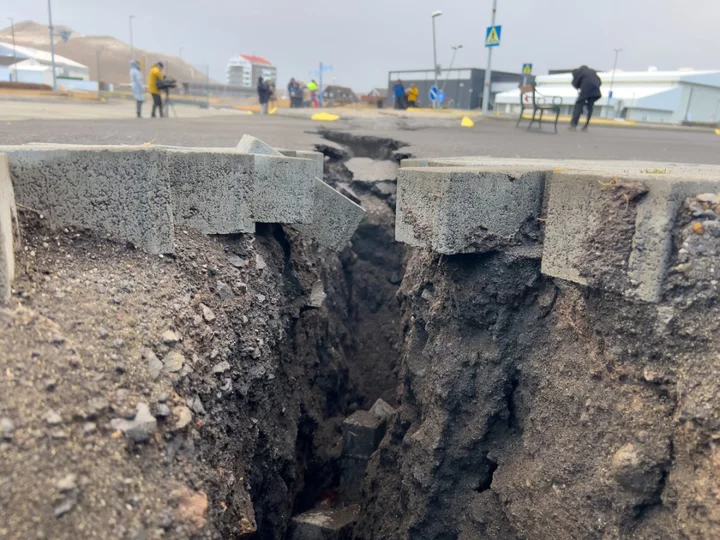
Germany Ordered by Court to Set up New Climate Action Plan
COP28 Daily Reports: Sign up for the Green Daily newsletter for comprehensive coverage of the climate summit right
2023-11-30 16:56

Alibaba’s Value Dips Below Upstart PDD’s in Landmark for China
Alibaba Group Holding Ltd. is set to lose its position as China’s most valuable e-commerce firm to eight-year-old
2023-11-30 16:56

French economy contracts in Q3, inflation eases further
PARIS (Reuters) -The French economy contracted by 0.1% in the third quarter of the year, revised data from the statistics
2023-11-30 16:54

French Economy Unexpectedly Shrinks While Inflation Eases
France’s economy unexpectedly shrank in the third quarter while November inflation sank more than anticipated — prompting investors
2023-11-30 16:48

UBS sees shift in new billionaires away from entrepreneurs to inherited wealth
ZURICH Billionaires increased in numbers and overall wealth last year, Swiss bank UBS said on Thursday, with the
2023-11-30 16:28

Morgan Stanley, Rothschild Join Finance Elite in Abu Dhabi Push
Rothschild & Co. and Morgan Stanley are among global investment banks opening up in Abu Dhabi as the
2023-11-30 16:27

Astronomers find unprecedented ‘disc’ around distant planet
Scientists have found the first ever disc structure around a star outside of our own Milky Way. The disc is around a young massive star forming in a stellar nursery called N180. It is within the Larg Magellanic Cloud, a dwarf galaxy that neighbours ours. The disc is 163,000 light years from Earth – meaning that it is not only the first to be detected outside of our galaxy, but also the most distant such disc ever seen. Matter cannot fall straight into a star. Instead, it flattens out, making a disc that spins around the star. Closer to the star, the disc rotates faster. Scientists caught that difference in speed using telescopes, confirming that it is a disc around a distant star. Scientists have seen such discs before, but only in our own galaxy. Being able to see them outside of the Milky Way is a remarkable feat of technology, scientists said. Lead author of the study, Dr Anna McLeod from Centre for Extragalactic Astronomy, Durham University said: “When I first saw evidence for a rotating structure in the ALMA data, I could not believe that we had detected the first extragalactic accretion disc; it was a special moment. “We know discs are vital to forming stars and planets in our galaxy, and here, for the first time, we’re seeing direct evidence for this in another galaxy. “We are in an era of rapid technological advancement when it comes to astronomical facilities. “Being able to study how stars form at such incredible distances and in a different galaxy is very exciting.” The findings are reported in a new article, ‘A likely Keplerian disk feeding an optically revealed massive young star’, published in Nature. Read More Astronomers find unprecedented ‘disc’ around distant planet Scientists find planets moving around in strange ‘rhythm’ Astronomers discover new six-planet system
2023-11-30 16:27

Olivia Rodrigo’s music inspired by ‘weird’ moments in her life
Opening up about her writing process, Olivia Rodrigo has said she takes inspiration from “weird” and “embarrassing” moments in her life.
2023-11-30 16:20

Turkish Economic Downshift Worse Than Forecast After Rate Hikes
Turkey’s economy cooled last quarter as the central bank moved to tighten monetary policy after May elections, a
2023-11-30 16:20

Teenage amateur golfer Rachel Lee tied for the lead in the Australian Open women's field
Teenage amateur Rachel Lee has finished the first round of the Australian Open in a tie for the lead with American Jenny Shin
2023-11-30 16:19

Iceland volcano – live: 120 earthquakes strike as Grindavik anticipate imminent eruption
Around 120 earthquakes have rocked the areas surrounding the town of Grindavik as they await a likely eruption, report the Icelandic Met Office. It comes as the exact location for an eruption has been revealed by the Icelandic Met Office, which says it “is still considered likely”. Experts at the Icelandic Met Office have issued a key update after a study of data from GPS stations and satellite images showed an “uplift” continues in the area of Svartsengi, north of Grindavík. The Met Office stated that the eruption is “still considered likely as the magma inflow continues”, adding that “the highest likelihood for an eruption is in the middle part of the dike between Hagafell and Sýlingarfell”. Earthquake activity has also led to the deepening of the port at Grindavik, according to RUV. The change in depth is because of the earthquakes’ impact, said the port manager Sigurður Arnar Kristmundsson. He told RUV: “The docks seem to have sunk by 20-30 centimeters when we measured about 10 days ago and then there is a chance that, yes, the bottom has sunk accordingly.” A fortnight ago, Grindavik was evacuated after magma-induced seismic activity tore vast chasms through the streets. Read More What to do with Grindavík: Has Iceland’s #1 selfie spot just emerged out of the ground? Is it safe to travel to Iceland? Your rights if you have a holiday booked Inside the abandoned Iceland town left in limbo by a volcano
2023-11-30 16:19

Elton John addresses Britain's Parliament, urging lawmakers to do more to fight HIV/AIDS
Elton John has urged British lawmakers to do more to fight HIV and AIDS
2023-11-30 16:19
